Underground cellars have been a tried and true way to store food for decades, if not hundreds of years. Cellars maintain the right humidity, darkness, and temperature to preserve food for long periods of time.
Historically, root (underground) cellars date as far back as 40,000 years, when people discovered that burying food underground allowed it to stay edible for long periods of time.
This article will provide a high-level overview so you can begin planning to build your own underground cellar.
Table of contents
Before You Start Building
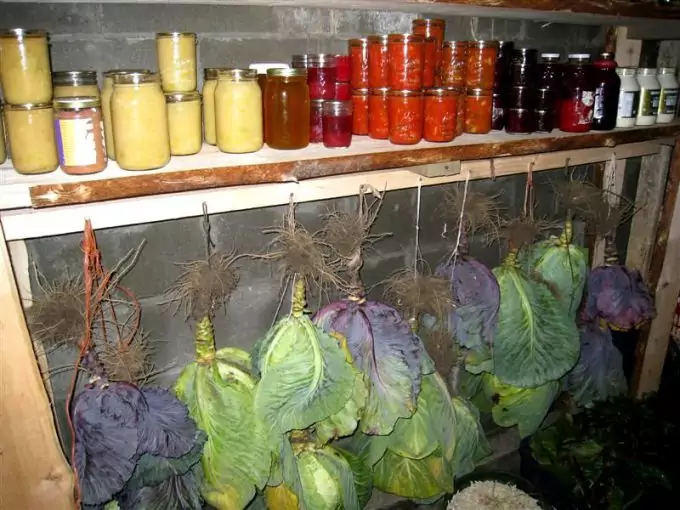
Root cellars will keep your food fresh and extend its shelf life. Three main factors will aid in preserving food in a root cellar – Temperature, Humidity, and Ventilation.
- Temperature: The ideal temperature varies depending on what you intend to store. Food that can tolerate lower temperatures, like autumn crops or roots, can be kept at 30 to 33 degrees Fahrenheit. Softer, warmth-loving vegetables like tomatoes should be stored at around 50 degrees Fahrenheit. It is ideal if you can regulate and monitor temperatures in the root cellar.
- Humidity: Maintaining humidity around 90% is ideal for most vegetables. This is especially true for root vegetables, such as carrots, potatoes, beets, etc. Leafy vegetables also benefit from highly moist environments, but other vegetables like onions and garlic should be stored at a lower humidity level of about 60%. If you need to increase the humidity in your root cellar, keep the floor wet or place some buckets of water on the ground.
- Ventilation. Ventilation will remove excess heat produced by the food when it “breathes” (breaks down carbohydrates producing carbon dioxide and heat). Ventilation also removes ethylene, a naturally produced chemical compound emitted by some (or all) foods. Ethylene can affect neighboring produce and cause sprouting. For proper ventilation, plan air pipes (or other ventilation techniques) before you actually start building the underground cellar.
If all these conditions are met, you can create your own food storage for tough times. An emergency food storage – we have plenty of ideas!
How to Build the Root Cellar
This section will provide practical advice and instructions for building your root cellar.
You have a few options before you actually start building and digging. If you have an underground basement, part of your house, and any additional heat sources are turned off, you can use that space for the cellar. Consider whether it will be possible to add ventilation pipes. If not, then it’s probably best to start digging outside your house.
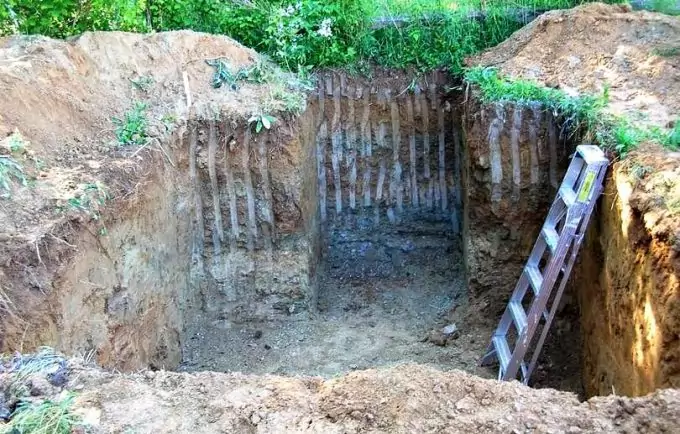
Most often, underground cellars are located outside the house on its perimeter. Cellars can be built completely underground, and you can use a vertical tunnel and staircase to enter them. It’s also possible to build a cellar in a hole in the side of an existing hill near your house. It’s best if your cellar faces North, as this will keep the area cooler during warm summer days.
Regardless of the method you choose, it will require digging. Make an appropriately sized underground cellar, considering how much you plan to store (especially during the winter season). When you determine how large it should be, add 1-2 feet to the sides to make the building process easier.
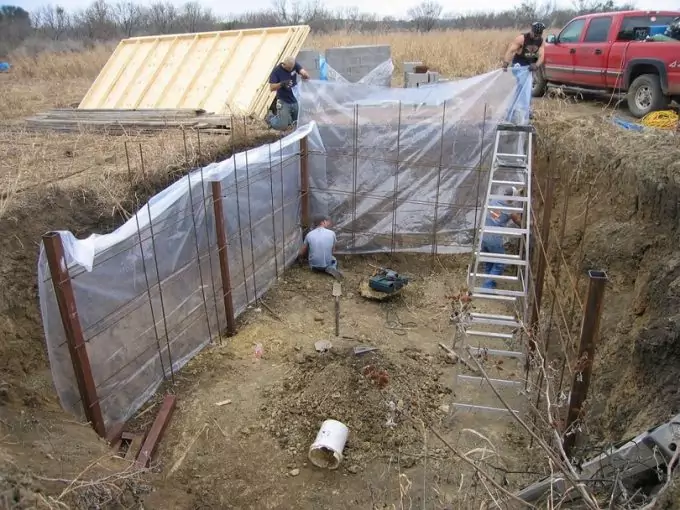
Assemble the Building Material
Once the hole is ready, assemble your building material. It’s ideal to build the walls and roof of the cellar with concrete. Wood can also be used, but it will not last as long in highly humid conditions. Wood can rot pretty quickly and may crumble, destroying your food.
It’s best to leave the floor uncovered and keep the soil exposed. Since soil retains coolness and moisture, an uncovered floor will contribute to maintaining the conditions you need for your underground cellar.
Since the soil on the ground will be uncovered, rodents and other small creatures may be able to creep into the cellar and eat your food. To avoid this, you can use a metal wireframe to cover the soil. If this doesn’t appeal to you, you can, of course, cover the floor with concrete, but you’ll have to use some other method to maintain adequate humidity.
Keep buckets of water or wet soil/sand on the floor, close to the food, and moisten it when you see the moisture level is down.
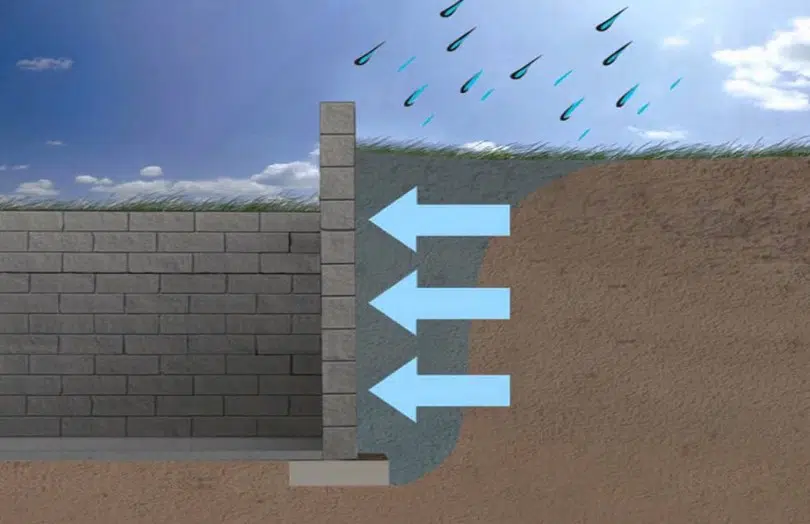
The roof should be several feet under the ground level, supported with pillars to keep it from crumbling.
Ventilation
When designing the ventilation, remember that cold and cool airdrops to the ground, and warm and hot air rises. To keep cool air within the cellar, you should have one ventilation pipe that goes all the way down to the cellar floor and exits above the cellar. To vent the warm air, install another pipe that enters the cellar from above and exits above ground, just like the first pipe.
Warm air within the cellar will be able to escape through the second vent. Locate both exhaust pipes on opposite corners of the root cellar. This way, the air must move in a circle from one corner to the other, maintaining smooth ventilation.
Protection From the Elements
Cover your vents’ openings with a metal wireframe to prevent insects and rodents from entering the cellar.
Your cellar door needs to be reliable and durable. Metal is ideal. Steer away from wood because it may rot in a humid environment.
For cellars built into a hill, the door can be placed at a horizontal level, so it’s more accessible and easy to enter.
Designing Your Cellar’s Interior & Storage Advice
Once you’re about finished with the cellar, you’ll need to install interior shelving and storage. Ideally, your shelving should be wooden, not metal. This is because metal can easily transmit and accumulate heat. Wood will help you better control cool conditions in the cellar. Due to the high humidity level, wooden shelves may deteriorate with time, but they can be repaired fairly easily.
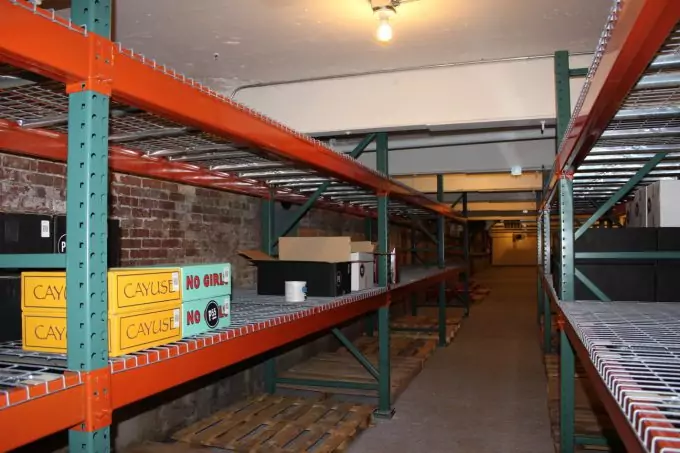
In addition to shelves, you will need to think about where to store the food – containers, boxes, etc. Ideally, the food should be open to the environment, not kept closed in containers, so that it can breathe in the root cellar. Open cardboard boxes are a good option. Due to the possibility of vermin or bugs, you may have to keep the product inside a wire mesh that will still allow vegetables and fruit to breathe easily.
Don’t wash or rinse your produce before storage, as this will decrease its shelf-life. To extend shelf-life, you can mimic nature by placing the products in wooden shavings, sawdust, newspaper (wooden material), and other organic materials. Place them on a bed (like a nest) of these materials, and don’t cover them entirely.
Always make sure to check on your root cellar continually. A root cellar may prolong the product’s life, but the food will still have a limited life cycle. With time, food will deteriorate and may rot. Be aware of fruits or vegetables that have already ripened, as these are the first to go bad.
Try to consume ripe products first. If you identify a bad product, remove it immediately, or it may compromise the health of the neighboring products (or even the entire box). Whenever you take a product out of the underground cellar, consume it as soon as you can. Once away from the cellar’s conditions, food will go bad quickly. If you don’t know what type of food you can store in a root cellar, look at our article on Best Prepper Food.
Ethylene
As mentioned earlier, ethylene is a gas emitted by ripening fruits (and some vegetables). If the cellar is small, this gas may accumulate more quickly than it can escape through vents. Apples emit more ethylene than most other fruits and vegetables. If you plan on storing apples along with your other products, you should be particularly cautious.
When too much ethylene is produced, it will quicken the ripening of your food. Root vegetables like potatoes and carrots will harden and become bitter in taste. If exposed to too much ethylene, they will quickly become inedible.
There are several options.
- A separate, underground cellar just for fruits.
- Avoid storing apples, though many may find this too limiting.
- Store apples near the roof, close to the ventilation pipes, so that the ethylene can escape the space efficiently.
- The best option depends on how much apple product you plan to store. If you have a lot of fruit throughout the summer, you may need a separate cellar. If your apple production is small, you may be ok just keeping them on a high shelf near the vents.
To repeat and emphasize, if you want to store different types of products in the same cellar, remember that products that thrive best at low temperatures should be positioned low in the cellar (ideally on the ground level). Products that need higher temperatures to stay fresh should be kept on higher shelves (mostly fruit). This ensures that the ethylene from the fruit will be able to escape easier through the ventilation pipes.
Other Considerations
A word of caution – avoid storing canned food in the cellar. Keep only fresh products and nothing else. In a cellar’s humid environment, the cans or metal lids/jars will rust, and the seal may become compromised. Canned and bottled products will do better in a dry, cool environment.
It’s best practice to attach a hydrometer and a thermometer to the door of your root cellar so you can monitor the cellar. During the winter, conditions won’t be an issue, but it may be difficult to keep the temperature down during the summer. Your primary concern is to keep your summer products during the winter season, so this is of relatively low concern.
We recommend installing electric lights in the cellar so that you can see. The light bulb should be well insulated to avoid electric shocks in a humid environment. The warmth coming from the light during the winter can be beneficial if temperatures outside are too low and affect the underground cellar’s temperatures. Light from bulbs can raise the temperatures by several degrees to help reach the optimal 40 to 50 degrees F.
Final Advice and Tips on Keeping Food Alive
Here are some final tips and tricks for root cellar construction.
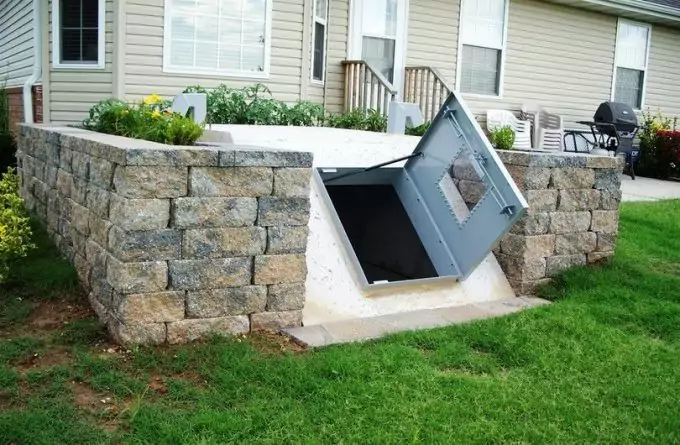
- Don’t build the cellar near a tree. The tree’s roots can spread over time and may compromise the stability of the cellar.
- Consider digging a drain hole in the center of the cellar or at the floor corners. If your ground floor is the soil itself, some water may build-up due to heavy rainfalls or long rain periods. To ensure that the water can drain, it’s best to dig a few holes, add pipes to them and surround them with some sawdust or wooden shavings. Screen them with metal wire meshes to block the pipes, so no rodents and vermin can enter the cellar.
- Position garbage cans near the center of the cellar so that water can drain into them as necessary. This will help avoid water accumulation in the cellar. Keep some organic (wooden preferably) material around the cans’ opening, so it blends in with the overall cellar.
Root Cellar Plans
If you want a jump start for your cellar, consider these resources for your planning.
Final Thoughts
A good root cellar is not just for hard times or an apocalypse. A cellar is a good storage location when you have large amounts of food or want to save on energy with less refrigeration. It is also a good location in a pinch when a twister is headed your way!

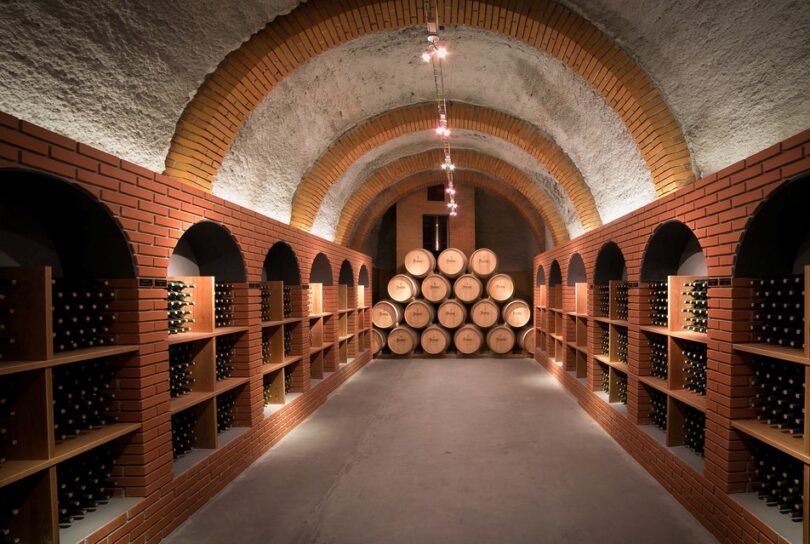





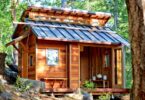

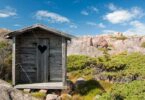
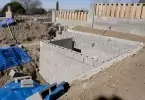
A very interesting article – thanks!
Thank you Trevor! Don’t forget to visit our site from time to time and see what’s new.
We are glad we could help.
I hope you got the best of interior and storage designing advice, including the material you should use for building the shelves, the kind of containers and boxes to use, and the state at which you should store your food.
I agree with Trevor. I’m planning on having my husband build our own cellar and this will come in handy.
We hope info on interior designs will be helpful.
Having an underground cellar is such a great idea. You get energy efficiency, and optimum use of limited land space.
I’d like to add that almost all fruits emit ethylene except for unripe bananas, blackberries, strawberries and watermelons, and almost all vegetables are ethylene-sensitive except for potatoes. And if you’re interested in netting, use a hardware cloth instead of the less expensive poultry netting because the holes in between would be smaller for pests to slip into.
A perfect cellar depends entirely on the design, and using high-quality netting material is important.
Having an underground cellar is an advantage, especially to less spacious houses. You can access free space without getting some from a neighborhood’s backyard. However, I guess it doubles the job in terms of building since extra labor must be done to place it underground (like digging and protecting it from worms. If we are to compare regular vault from this underground cellar, which one is costly?
Building a cellar with all my favorite wines in it is absolutely a great idea. I have been thinking about this for a long time, and I hope it would be materialize this month. If I am to place about a thousand bottles in my underground cellar, what are the necessary features that I need to consider except for money? I hope you can give me full details about it.
I have read this blog post over the internet, but I do not know whether it is true or not. If it is, I wanted to visit it and to taste their good wines available. Anyway, the post mentioned about this place named Moldova that has a long wine cellar, 55 kilometers to be exact. I want to know whether it is built underground or a regular one to gain some design ideas.
You can consider having electricity from above ground, but another idea would be to buy long-lasting lanterns. They work just fine, you only need to buy 2 or 3, and they should last from a few weeks to several months depending on how often you keep them on.
Underground cellars protect alcoholic beverages from external influences, it provides constant temperature and constant humidity, and also darkness. If left exposed to heat, light or temperature fluctuations in temperature and humidity, the majority of the wine can spoil. Underground cellars are a proper storage place for wine, it is known that they don’t only maintain their quality, but in many cases they actually improve the flavor.
Organizing things in your cellar is important. You can begin by distinguishing between what you want to keep and what you can dispose off, be honest with yourself when you do this. A lot of people vote for keeping things with the intention of using them in the future, even though they haven’t used them in years. Make a solid plan as to how frequent you will need them.
An underground wine cellar offers the advantages of energy efficiency as well as use of limited space. A wine cellar provides cool temperatures and high humidity, necessary to storage and aging of wine.
It goes without saying that your underground cellar needs lighting. You can consider long-lasting lanterns or electricity from the main unit.
There are many solutions for organizing your underground cellar. Some are simple while others are more advanced. You can get experts to help you.
Well, there are big wine cellars, most of which are found at Mileștii Mici. However, such gigantic designs will do you no good, if you want to build a sizable cellar for your family. The provided info in our article will be more helpful.
Building and maintaining underground cellars needs careful planning. The provided info should give you a head start, but you will need the assistance of an expert if you are after a large cellar design.
There are benefits to using an underground cellar as far as storage and aging of wine is concerned as to using a regular vault. And a vault isn’t meant for wine storage.
Super